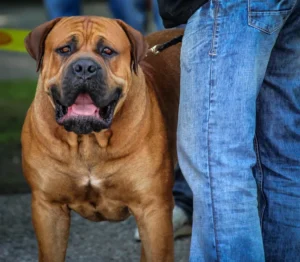
African fat-tailed geckos can often be mistaken for leopard geckos, yet they are actually different species of gecko. While both types may appear similar in appearance and care needs, African fat-tailed geckos tend to be more widely available and less demanding as pets than leopard geckos due to increased availability and convenience. Knowing their needs as potential pets is crucial if you’re interested in keeping one as a companion animal.
African Fat-Tailed Gecko Behavior and Temperament
African fat-tailed geckos are generally peaceful creatures that make minimal noise and do not bite when handled. Beginner reptile enthusiasts will find these small geckos easy to handle as they do not require extensive training in order to be handled. These reptiles tend to be active at nighttime while seeking shelter during the hot daytime sun.
African fat-tailed geckos can drop their tail when threatened, which may be distressing to any unknowing gecko owners but serves as an instinctual defense mechanism. While its tail will regenerate eventually, its appearance won’t quite match before. To avoid traumatizing your gecko owner too severely or startling or scaring it too often and prevent this form of defense mechanism occurring again, avoid holding too tightly, startling or scaring it, housing two males together, startling or startling it, startling or scaring it; avoid holding too tightly, startling or scaring either so as to avoid dropping its tail; additionally never house two males together as territorial fights will ensue between males as this will create territorial fights; finally if your gecko begins shaking its tail rapidly then stay away as this could indicate something going down; take this sign off before striking and strike instead!
Size Information
African fat-tailed geckos are relatively small pet reptiles. Female African fat-tailed geckos only reach seven inches long while males may reach nine inches, including their tail. Some geckos have even reached nearly 12 inches! But their unique feature lies not in their length alone but instead with their distinctive fat tail which reaches over one inch wide at its widest point and gives these creatures their name.
African fat-tailed geckos do not require much space; one or two can happily live in a 10 or 20 gallon aquarium with a mesh or screen top, providing easy cleaning, safe placement of heat lights on the lid, security from other pets or children who could cause injury, and multiple hides (dry and humid), like rock caves or half logs to sleep in, should do. Temperature should range between 90 degrees Fahrenheit on one end to high 70s to low 80s on the other, with humidity between 40-60% on average for this species.
African Fat-Tailed Geckos
Being native to Africa, African fat-tailed geckos tend to prefer dry habitats. Since these lizards do not burrow or climb, all that’s required to keep them happy alongside a hide is some basic substrate like paper towels, newspaper or butcher paper – or for an authentic look reptile soils such as Repticarpet are great choices; though Repticarpet offers additional advantages over its alternatives for easy cleanup while not digested when eating prey items – although its best used sparingly due to impaction issues.
What Do African Fat-Tailed Geckos Eat and Drink? These geckos are insectivores, feeding on crickets, mealworms, waxworms and other easily obtainable insects as food sources. These insects should be fed to your African fat-tailed gecko after being gut-loaded, and dusting with reptile calcium powder should be done every other feeding. Talk with your exotic veterinarian about multi-vitamin options for your gecko. This supplement can provide essential vitamins and minerals daily. Adult African fat-tailed geckos should consume two dozen crickets every week with eight or nine crickets being fed every other day. Worms can be placed in shallow dishes inside their tank; and clean water should always be available nearby.
As with other reptiles, if an African fat-tailed gecko is neglected properly it can develop health issues similar to other reptiles. Metabolic bone disease, dysecdysis (retained shed), malnutrition and other problems often manifest themselves when left alone for too long without proper care. Furthermore, parasites like cryptosporidium 2 may needlessly increase intestinal parasite load which will require medical intervention from veterinarians as well.
African fat-tailed geckos require minimal upkeep costs. Food costs will likely be the greatest expenditure; however, raising crickets or mealworms yourself could reduce that expense significantly. Lightbulb changes must also be performed regularly in order to maintain an ideal temperature in their tank and keep your gecko warm and happy.
African Fat-Tailed Geckos Can Be Pets African fat-tailed geckos are nocturnal pets that are most active when most people are sleeping. If daytime activity is important to you, diurnal species might be better choices; otherwise, African fat tailed geckos make ideal first reptile pets due to being hardy pets that require minimal space and are usually quite docile – although adult supervision and gentle handling is recommended to keep these fragile lizards safe.





